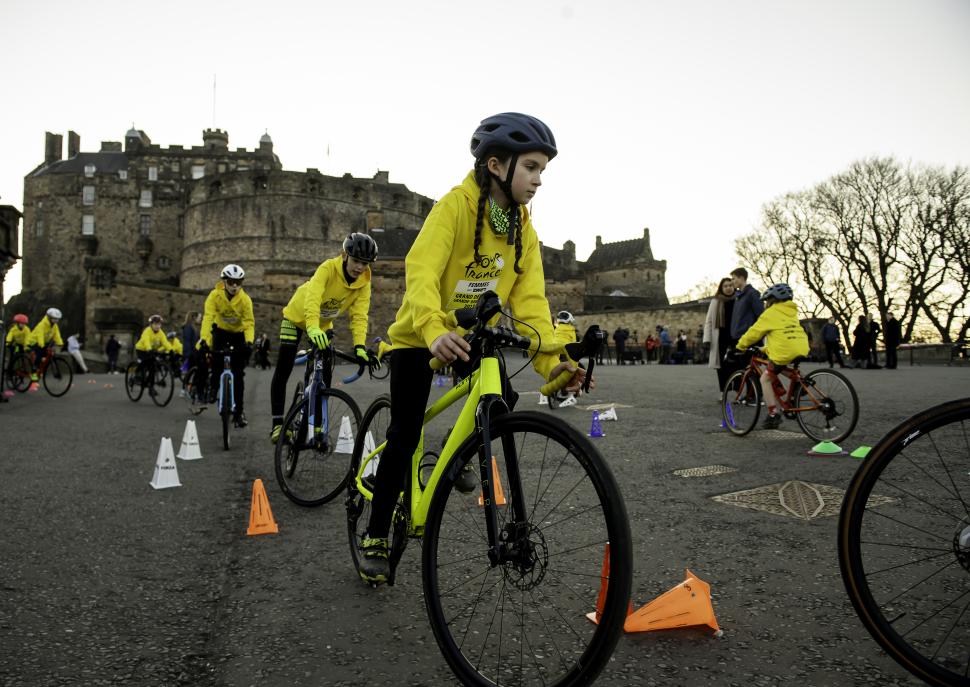Buzz words like active travel may seem like a recent phenomenon, but for campaigners in Lothian, it’s a struggle they are all too familiar with fighting for.
Spokes were established in 1977 amid oil crises and a surge in new environmental organisations such as Greenpeace and Friends of the Earth. But unlike several other grassroots organisations borne out of that period, they have survived. With neither employees nor charity status, this hardy group of volunteers have become the critical friends campaigning for better cycle access and public transport across the region.
Besides lobbying local authorities, their primary activity is producing cycle-oriented maps of their local areas, surveyed and created with volunteer cartographers and sold around the local community. Their latest map of West Lothian, released earlier this week, was enthusiastically endorsed by both Linlithgow’s MP and the local council. It’s all a far cry from fighting for the right to ride a bike through a park.
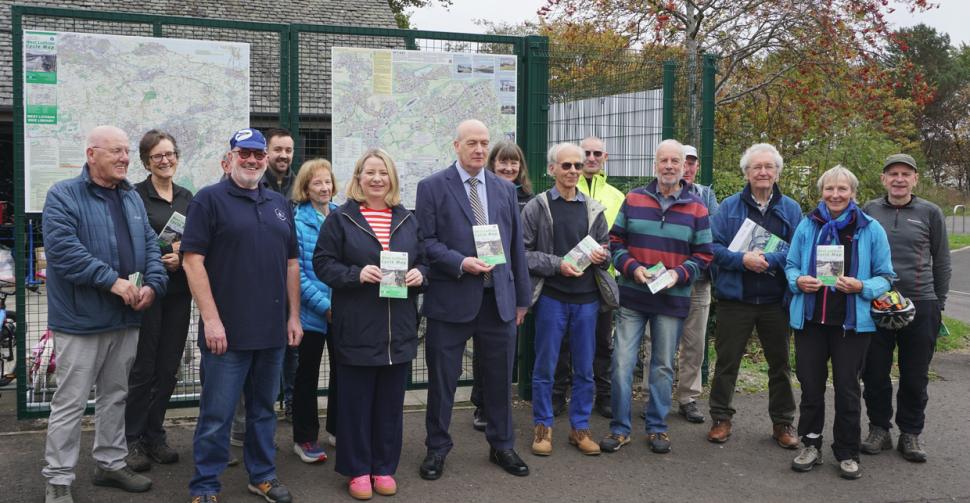 2025 Spokes West Lothian map launch with Kirsteen Sullivan MP and Cllr Peter Heggie (credit: Spokes Lothian)
2025 Spokes West Lothian map launch with Kirsteen Sullivan MP and Cllr Peter Heggie (credit: Spokes Lothian)
As new battles persist over cycle lanes, reduced speed limits and public transport integration, road.cc spoke to Ian Maxwell, a Spokes person and campaigner since the start, about how they’ve continued to thrive and gain influence over Lothian transport policy, how there’s always more that can be done, and how their maps have become the “vinyl records” of the local community. Ian’s words below have been edited for brevity and clarity.
“They put a slide up with all the bus lanes and said, ‘Here’s your cycle network’”
The early campaign that always gets mentioned is the Meadows, a large park in the south of Edinburgh where cycling was not allowed on any of the paths. And yet, it’s a really good through route to the university, to the centre of town and it’s surrounded by busy roads. So we campaigned for that, we did surveys to count the number of people cycling around, we made progress and got agreement to have a change.
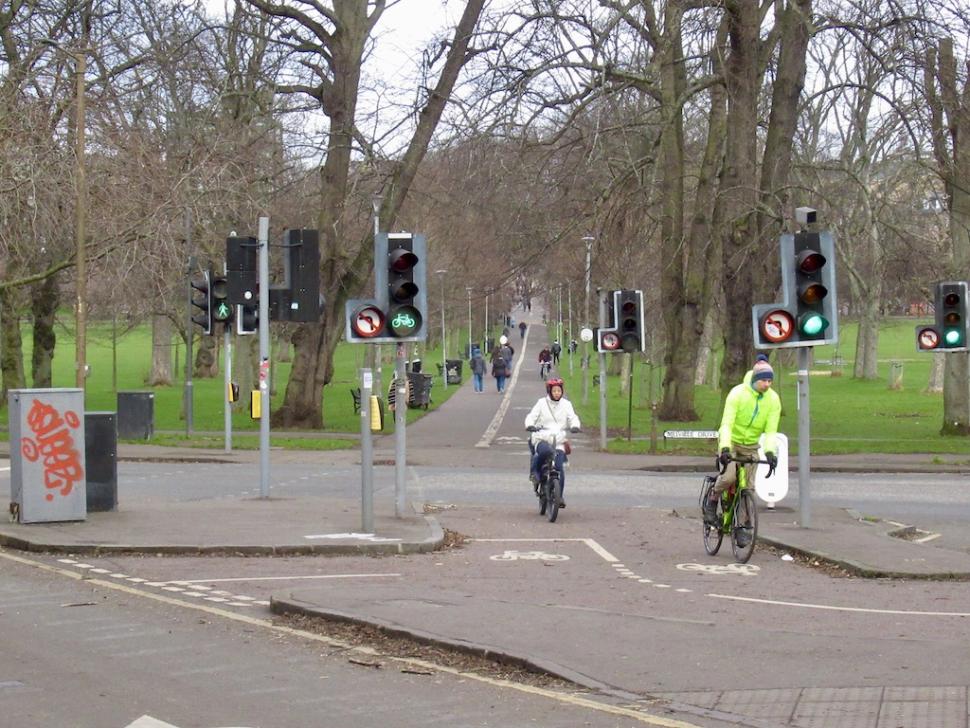 The Meadows Edinburgh (credit: by Richard Webb/CC BY-SA 2.0/ Geograph)
The Meadows Edinburgh (credit: by Richard Webb/CC BY-SA 2.0/ Geograph)
And there was a real backlash from one Conservative councillor in the Scotsman saying that ‘SPOKES can get lost and take its “Commie friends” with it’. And that led to an absolute torrent of letters from lots of establishment figures like lawyers and ministers saying, ‘no, no, this is completely wrong. Spokes is justified in doing this.’ That was the event which crystallised things for us. But that was one amongst many things we were trying to do. The other big thing that happened was that we were campaigning for the various disused railway lines to be converted into cycle routes. And we did a few of them ourselves almost to show the way.
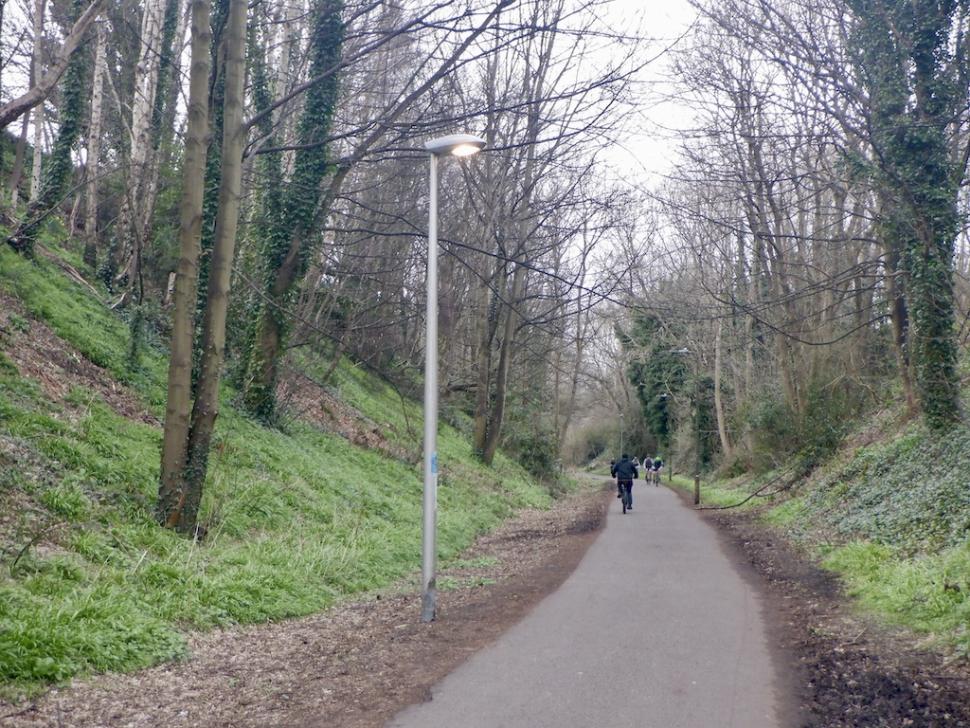 Roseburn off-road path popular with cyclists and walkers in Edinburgh (credit: by Richard Webb/CC BY-SA 2.0/ Geograph)
Roseburn off-road path popular with cyclists and walkers in Edinburgh (credit: by Richard Webb/CC BY-SA 2.0/ Geograph)
And if we hadn’t campaigned for it, the risk would have been that the railway lines would have been cut through by housing developments. That meant by the end of the 1980s there was a reasonable network of off road routes starting in Edinburgh. That’s not the ultimate of what you want, because you want road facilities that take people for normal journeys rather than recreational journeys, but it gives you a starting point, and quite a good network at least. But still, I remember going to a meeting with the Regional Council and the councillors said, ‘Oh, look, we’ve got all these cycle routes there.’ But they just put a slide up with all the bus lanes in Edinburgh, and said, ‘Here’s your cycle network’. And we thought, no, that’s not quite what we want.
Mapping out the organisation
Spokes also started producing cycle maps at that point [in the 80s]. Partly you produce a cycle map to show people where the nice places are, whether it’s off road routes, quiet streets or whatever, to just show them that it is possible.
But it’s also a campaigning tool, because the map shows you the gaps. You do a map, you you change the emphasis from emphasising motorways and Main Roads to emphasising cycle facilities, and that then shows up what is there, but it also shows what’s not there, and at that point, you could show major gaps across the city centre.
Since then, the maps and the membership fees have been our main source of income, so we’ve not been reliant on grants in the same way that some organisations become. And a map is one sheet of paper folded up, it’s actually quite cheap to produce. There’s obviously a lot of work in the research, but the profit margin is quite good. And so that has always provided Spokes with reasonable income, both to keep our own stuff going, but also to do other projects.
We’re not a charity. Spokes is very much a child of the 70s so rather than us having lots of titles and hierarchies and so on, the way we work is to have different working groups, one concerning planning, one concerning the maps that we produce, and one concerning resources, which includes publicity, events and other ad hoc things as necessary. It means the important things get done, but they get done in a more coherent way and it means people don’t burn out. That’s always a danger. Also charities or whatever, aren’t exempt from having internal disputes or power struggles. But by and large, over the years, we’ve managed.
We’ve never employed staff. When you’re totally voluntary, everybody mucks in and does things. When you get staff, you get an expectation that the staff is going to do anything and everything. And if you end up with the person doing all the stuffing of envelopes and the other routine things, that’s not a very good way of deploying a staff member.
There are a lot of people in Edinburgh who are environmentally aware, who are relatively radical, who want to change things, and are quite receptive to cycling. There’s never been a shortage of people to join. Going back to the 1970s we’ve never set a membership fee. We’ve just said, ‘give us what you think it’s worth’ and you get quite reasonable amounts of money through that! It means that you don’t have the bureaucracy or big debate about whether we should have the membership fee of six pounds or five pounds and stuff like that.
The Council’s ‘critical friend’
We’ve done a lot of lobbying of Edinburgh Council, but also the surrounding councils and other institutions. But the basis of the campaigning or the lobbying has always been as a critical friend, rather than as an oppositional force, and I think that is really important. Somebody who’s just retired from the council who’s been in the field of sustainable transport for a long time, said Spokes was effective because of that approach. And now we often get criticised for being this strong vested interest that’s got a real grip on the council whereas, we’re not nearly as big and influential as it’s made out to be. We have managed to not be too political either. Because I remember one of the early councillors who was really keen on helping us was a Conservative. We’ve had Labour, we’ve had SNP as well.
We’ve certainly gone from being outsiders to insiders. In the 70s and 80s, we fought to even be listened to, whereas after the first 10-15 years of campaigning, we became a consultee. Whatever consultation or discussion there was on transport options, our planning group looks at planning applications. But that doesn’t mean we’ve got a massive amount of power compared with other lobbies. For instance, Edinburgh had a vote about congestion charge in the 1990s that was lost and that was a real missed opportunity. Now the politicians 20-30 years later, are talking about it again.
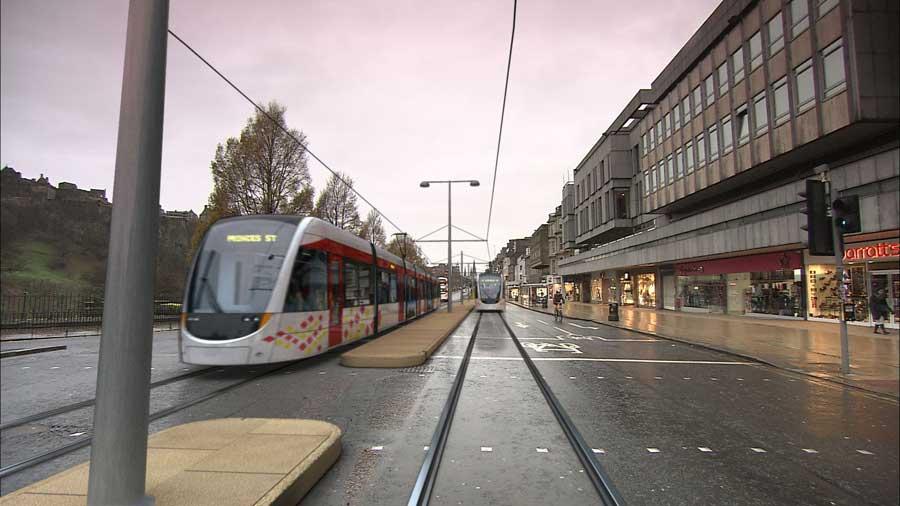 Edinburgh Trams.jpg (credit: road.cc)
Edinburgh Trams.jpg (credit: road.cc)
One of the big, big issues in Edinburgh is the development of the tram system. We did a consultation of members to find out what their view was and we got a fairly strong indication from members that they were happy for us to be positive about trams, as long as the position of cyclists was protected. We’d would like to see a further reduction in motorised traffic alongside the tram, because it would be an opportunity to pedestrianise further sections of the city centre, following the example of many historic European cities. Given that Edinburgh has got a massive number of tourists we feel that should be the way.
The trend is still with us
We make some use of social media, we’re involved, but probably not using as much of it as we could. But by publishing paper maps, we’re almost digging our heels in. It’s a bit like your vinyl records. Everybody thinks, ‘oh well, you don’t need a map because you can just find your way on your phone’. I still think online methods of navigating are really useful, particularly if you’re in a strange place. But when you’re looking at a phone screen you can’t see the whole area. You can’t plan a journey in the same way. And we now print them on waterproof, recyclable paper, and we continue to sell plenty. . We keep thinking that people will stop buying [our maps] but they don’t!
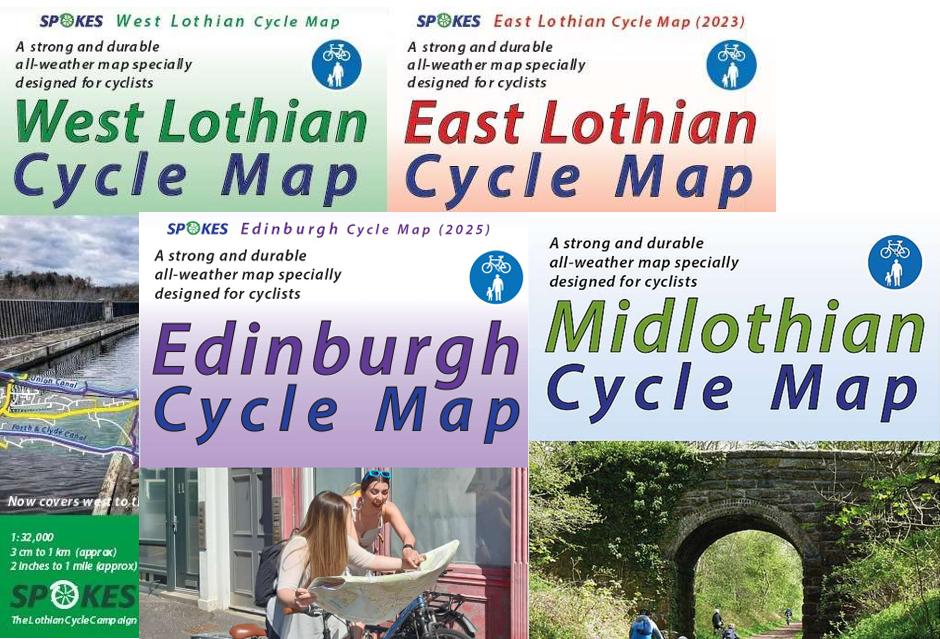 Spokes Lothian maps (credit: Spokes Lothian)
Spokes Lothian maps (credit: Spokes Lothian)
It’d be perfectly possible for us to put all our maps online now. But I’m not sure there’s much justification for it, because various other people and companies are mapping anyway. If they didn’t have cycle options, it would be far more relevant to us. But because they do I think we will just leave the online market to those big players, and we will continue. We sell the maps to bookshops, local cycle shops and direct, big cycle shop chains are not good at putting in local items. But in the past, we also gave out lots of maps just as a promotional tool, and we ran out. It’s just trying to get everybody into a frame of mind where cycling becomes easy and a habitual activity, rather than a sort of occasional outing.
With cycle campaigning, you can assess how effective you are by the amount of opposition you’re seeing. At the moment, with opposition to things like 15 minute cities and 20mph, it’s almost like there’s a battle going on. If you’re doing campaigning that doesn’t generate a response, you’re not campaigning enough, you’re not being radical enough. And we do need radical change. If we can create an Edinburgh that has got a far more pleasant walking, cycling and public transport environment, then that is a benefit to everybody, but politicians always need to be reassured in these things.
While we’ve achieved a lot, I’m still disappointed that it’s taken us so long to get the more radical things through, and I would hope that we would continue to press for a far more people-friendly, less motorised type of city in Edinburgh. And I think the trend is still with us. We’re going in the right direction. But I think the problem is how long it will take for us to get to a really good cycling environment across the region and beyond.

